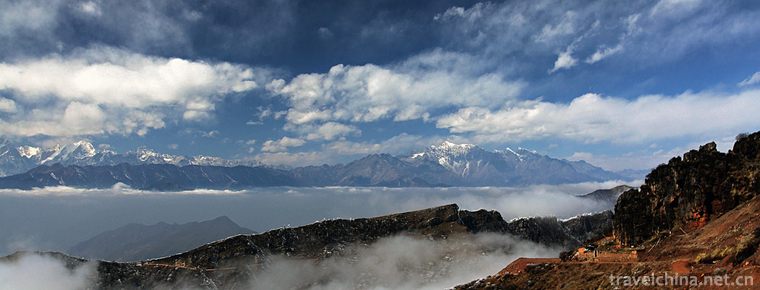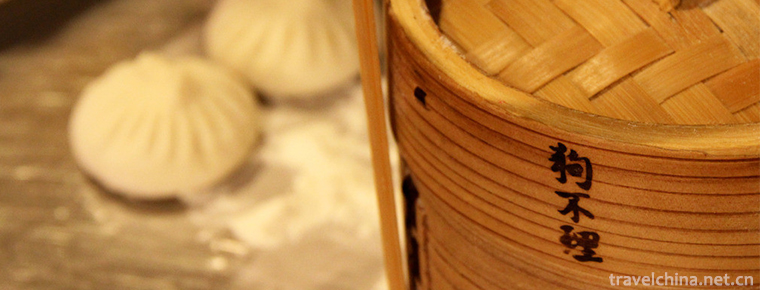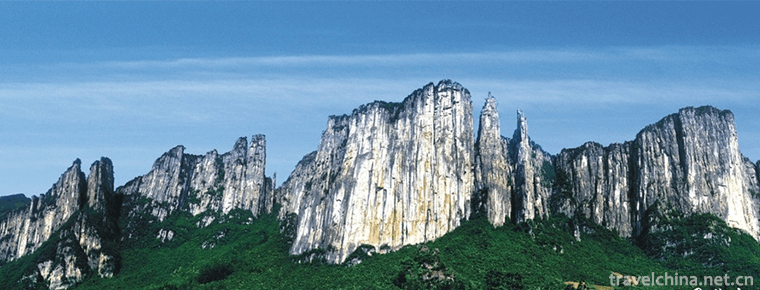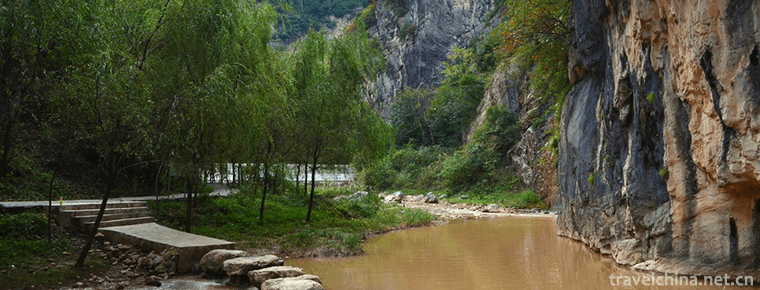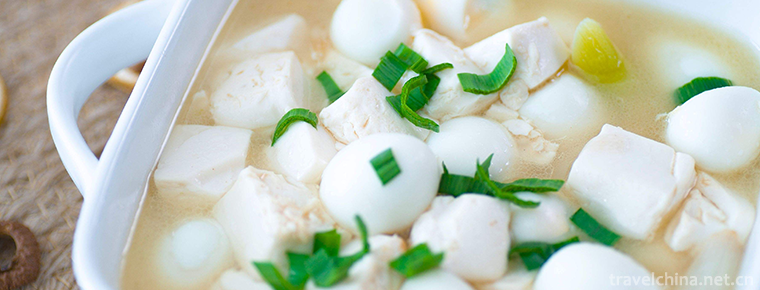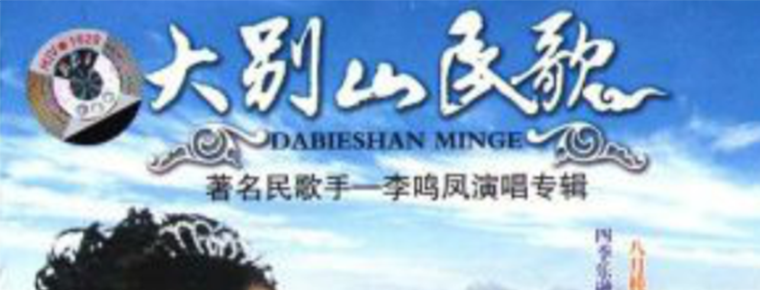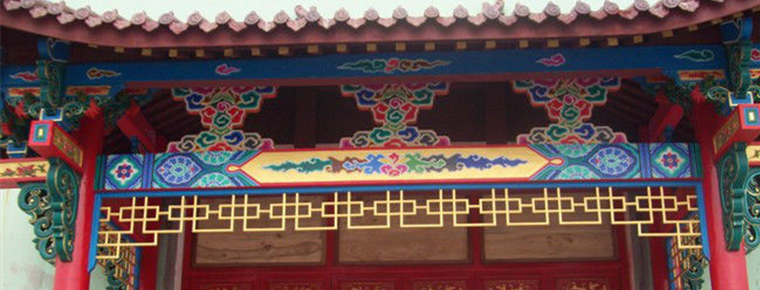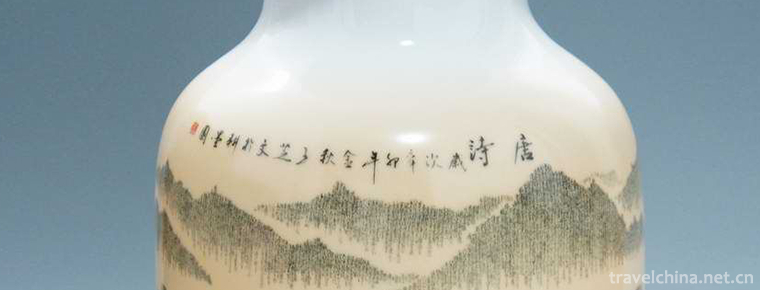Mount Wutai
Wutai Mountain, National AAAAA Class Tourist Area, National Key Scenic Spots, National Geopark, National Natural and Cultural Heritage, Ten Famous Mountains in China, Four Famous Mountains in Buddhism in China, and Five Buddhist Holy Land in the World. Located in Xinzhou City, Shanxi Province, between 38 50 39 05 north latitude and 113 29 113 44 East longitude, with a total area of 592.88 square kilometers.
"Ming Shan Zhi" contains: "Wutai Mountain five peaks stand high above the cloud table, the top of the mountain without trees, like a terrace of soil, so called Wutai. Mount Wutai is the only Buddhist temple in China that exists in the Yellow temple. By 2017, there were 47 monasteries in Wutai Mountain, 39 in Taiwan and 8 out of Taiwan. Among them, more monasteries were built and more emperors visited. The famous ones are: Xiantong Temple, Pagoda Temple, Bodhisattva Top, Nanshan Temple, Dai Luoding, Guangji Temple, Ten Thousand Buddha Pavilion and so on.
Mount Wutai is the northern end of the Taihang Mountains, spanning Wutai County, Fanshi County, Daixian County, Yuanping City, Dingxiang County, Xinzhou City, more than 500 miles on Friday. It is composed of a series of mountains and groups of peaks between the north latitude of 38 [50'- 39 [05'] and the east longitude of 113 [29'- 113] 44'. Five of them are as flat as the peak, with five names. Because of the cold climate in the mountains, summer is still not seen in summer, so it is also called "cool mountain". The total area is 250 kilometers, and the total area is 592.88 square kilometers.
The stratigraphic integrity and richness, especially the typical peculiarity of Precambrian strata, are the key areas of geological research in China. Most of the strata in Wutai Mountain are named after mountains, rivers, villages and towns in this area. They play an important role in geology.
Mount Wutai is made up of ancient crystalline rocks. The northern part of Mount Wutai is cut deep and steep with five peaks standing up. The peak is flat as a platform: Wanghai Peak in East Taiwan, Hanging Moon Peak in West Taiwan, Jinxiu Peak in South Taiwan, Yedou Peak in North Taiwan and Cuiyan Peak in Zhongtai. Outside the five peak is called Tai Wai, within the five peaks, Taiwan's Huai town as the center. The lowest elevation of Mount Wutai is only 624 meters above sea level, and the highest elevation of the top of the North Platform is 3061.1 meters above sea level. The climate in the mountains is cold, the top of the platform is ice all year round, and the summer is cool, so it is also called Qingliangshan, a summer resort. The natural vegetation of Wutai Mountain is mainly grassland, composed of meadow, grassland and shrub. It is an excellent summer pasture.
The Wutai Mountains are located in the hinterland of the North China Continent with an ancient geology and a peculiar landform. They are continuous with the Hengshan-Taihang Mountains and have a relative height difference of more than 2400 meters. The Wutai Mountains have exposed a large area of different strata and geological structures of the earth's crust, showing the geological structure and geological composition of the basement of the mainland of China. They are ancient strata known to the world for more than 2.5 billion years. The highest mountain. During the long evolution of the earth, Wutai Mountain experienced the Tiebao Movement, Taihuai Movement, Wutai Movement and Yanshan Movement, forming the Wutai uplift composed of the "Wutai Group" green schist and "Doucun Slate". It has a high level of paleoplanation, a well-developed glacial landform and unique features. Alpine meadow landscape, but also the Quaternary glaciers and tremendous denudation force caused by the "dragon rock", "frost heave hill" and other periglacial landforms.
Wutai Mountain has a unique and complete geological structure, stratigraphic section, fossil remains of paleontology, Cenozoic planation surface and periglacial landforms of the early Earth. It has a complete record of the earth's late Neoarchean-Paleoproterozoic geological evolution history. It is of worldwide significance in the delimitation of geological structure and chronostratigraphy, and is of global geological value. The best record of early Earth evolution and early plate collision orogeny in the scientific community is a typical example of comparative studies of global crustal evolution, paleoenvironment and biological evolution. Therefore, Mount Wutai is known as the "Geological Museum of China".
The cold climate in Mount Wutai is also known as "cool mountain". Although at roughly the same latitude as Beijing, the climate is similar to the Great Hinggan Mountains in northeastern China. The annual average temperature is minus 4 C, the hottest from July to August is 9.5 C and 8.5 C, respectively, and the coldest in January is minus 18.8 C. In Taihuai area, spring comes one month earlier than the top of the platform, autumn comes one month later. The temperature difference is about 6 degrees Celsius. The annual average temperature is 2-3 degrees Celsius, the lowest temperature is minus 30 degrees Celsius, and the highest temperature is 30 degrees Celsius. In summer, the air clouds in Tai Huai area are low, humid and rainwater.
Mount Wutai was originally a celestial celestial being. It is called purple Fu mountain, also known as the five peak mountain Taoist temple, and Ceng Jianyou's purple Fu Temple is the place where Taoists practice. "Ching Liang Shan Zhi" said that when the Buddhist Manjusri Bodhisattva first came to China, he lived in a stone basin cave, and the stone basin was in the Taoist view of metaphysics and truth, which indicated that Wutai Mountain was the home of Taoism at that time.
Huixiang, an eminent monk in the Tang Dynasty, quoted from the Book of Immortals in his book Ancient Qingliang Zhuan as follows: Wutai Mountain, named Zifu, is often purple, and immortals live in it. In the three years of Yongjia in Jin Dynasty, more than a hundred families in Yanmen County, escaped into the mountain and saw the mountain people driving away without returning, so they settled down in the rocky fields. Those who return will be expected to live there. No one knows where he is. The old man is the capital of the mountains.
The introduction of Buddhism into the Mount Wutai began in the Eastern Han Dynasty. In Yongping eleven years (68 years), yah yam and Zhu flange came to Mount Wutai. Because there was the Ashoka Shrine Tower very early in the mountains, and Wutai Mountain was the place where Manjusri Bodhisattva taught and lived, the two built a temple here. There are many mountains and rivers in the station. The rivers are vertical and horizontal. "Chiang Liang Shan Zhi" contains: "On the left side of the tower, there are the footprints of the Buddha of Sakyamuni, which are one foot six inches long, six inches wide, a thousand wheel faces, all of which are visible." According to legend, not only did Kadhima and Zhuflan discover this footprint, but also the Buddha's "sacrifice." In addition, the mountain of Yingfang Village is magnificent, similar to the Indian Griffin Mountain (Sakyamuni Buddha's practice). Because of these three reasons, we decided to build the temple here. After the completion of the monastery, it was named the Ling Jiu temple with its mountain shape. The emperor of the Han and Ming Dynasties added the word "Dafu" (meaning Hongxin) to express his belief in Buddhism. Therefore, the full name of the monastery after its completion is Dafu Linghui Temple. The Dafu Ling Jiu temple is the predecessor of the Hon Tong Temple. Since then, Mount Wutai has become the center of Chinese Buddhism, and the Dafu Ling Jiu temple is the earliest temple in China.
During the northern and Southern Dynasties, the development of Buddhism in Mount Wutai appeared the first climax. In the Northern Wei Dynasty, Emperor Xiaowen expanded the Lingjiu Temple on a large scale, and built twelve monasteries around it, such as the Confucian classics and the Zhenrong Temple. In the Northern Qi Dynasty, the temple of Mount Wutai increased to more than 200.
In the Sui Dynasty, Emperor Wen of the Sui Dynasty set down a temple at the top of each of the five platforms. Namely, Dongtai Wang Hai temple, South Taiwan Puji temple, West Taiwan farai temple, Beitai Ling Ying temple and Zhongtai performing temple. Because Mount Wutai is the place where Manjusri Bodhisattvas perform, the five temples on the top of the platform all offer Manjusri Bodhisattvas, but the five Manjusri have different codes: Dongtai Wanghai Temple for clever Manjusri, Nantai Puji Temple for wisdom Manjusri, Xitai Fare Temple for lion roaring Manjusri, Beitai Lingying Temple for Wudi Manjusri, Zhongtai Performing Buddhism Temple for Buddhist scholars. Tong Wenshu. Since then, anyone who goes to Mount Wutai to worship must go to five temples and worship in the temple. At this time, the name of Mount Wutai has appeared in the history of the Northern Qi Dynasty.
In the Tang Dynasty, there were second climaxes in the development of Buddhism in Mount Wutai. During this period, according to the ancient Qing Liang Chuan, there are as many as three hundred monasteries and more than 3000 monks. At this time, Wutai Mountain is not only one of the famous Buddhist mountains in China, but also a veritable Buddhist holy land, known as the first of the four famous mountains of Chinese Buddhism. This is the beginning of Wutai Mountain's dominance in Chinese Buddhist circles, and the beginning of Wutai Mountain's development into a famous mountain holy place under the use and Presidence of feudal rulers.
In the Tang Dynasty, Buddhism was highly respected and Manjusri Bodhisattva was especially respected by Buddhists. At that time, the State stipulated that all temples in the whole country must be dedicated to the statue of Manjusri Bodhisattva. Because both the court and the field respect Manjusri Bodhisattva and regard Mount Wutai as a Buddhist holy land, Mount Wutai is unprecedentedly prosperous and famous monks come out in large numbers. Chengguan is a prominent representative.
With the construction and expansion of Buddhist temples, the number of monks in Mount Wutai is increasing. In the period of Zhen Yuan, Tang Dynasty, the people of Heshan and Nida reached ten thousand. The prosperity and development of the monasteries had a great negative impact on society, politics and economy. In 854, Wuzong ordered the demolition of the temples and the return of monks and nuns to the common customs. Overall, more than 44,600 temples and monasteries have been demolished in China, and more than 260,000 monks and nuns have returned to the public, and tens of millions of hectares of land have been recovered. Mount Wutai is no exception, monks scattered, the temple was destroyed, the history is called "Huichang destroy Buddha". Tang Xuanzong ascended the throne and prospered Buddhism again. The government stipulates that the number of monks in Mount Wutai is still "five thousand monks". In fact, there are much more privacy and travel monks than "five thousand monks". Throughout the Tang Dynasty, the number of monks in Mount Wutai was the largest. The temples and the monks are also a sign of the sacred sites of Mount Wutai in the Tang Dynasty.
Another symbol of the formation of the Buddhist Holy Land in Wutai Mountain in Tang Dynasty is the infinite admiration and pilgrimage of foreign Buddhists to Wutai Mountain. The Tang Dynasty was the center of economic and cultural exchanges among Asian countries with its prosperous economy and strong national power and high international prestige. With the expansion of international contacts, Mount Wutai is also admired by Buddhists in India, Japan, Korea and Sri Lanka. There are many foreign monks who courtesy the Mount Wutai and seek Buddhist sutras and Buddhism in Mount Wutai.
In 1982, Wutai Mountain, in the name of Wutai Mountain Scenic Area in Shanxi Province, was approved by the State Council to be listed in the first batch of national scenic spots. Over the years, Wutai Mountain was awarded "National Key Scenic Spots", "One of the Ten Famous Mountains in China", "National Geopark", "National Natural and Cultural Heritage", "National AAAAA" "Grade tourist attractions", "World Heritage" and other honors.
Mount Wutai is the monastery of Manjusri Bodhisattva. In Yongping eleven years (68 years), Molten and Zhu flanges came to the cool cool mountain to build the Dafu Ling Jiu temple. This Kaishan temple on Mt. Wutai, also known as today's Datong Temple, is the oldest Buddhist temple in China, and can be regarded as the earliest record of temple construction in China.
In the history of Chinese Buddhism, there were four incidents of "extermination of Buddhism", and the Mount Wutai was the first to bear the brunt. Sui Xing, Sui Wendi, Sui Yang Di are Buddhist believers, enthusiastic about supporting Buddhism, ordered to build temples on all five terraces. The early and middle Tang Dynasty was the heyday of Chinese Buddhism, when Chinese Buddhism matured. There were more than 360 temples in Wutaishan. The murals in Cave 61 of the Mogao Grottoes in Dunhuang depict more than 60 square meters of pictures with numerous temples and pilgrims, reflecting the style and features of the peak period of Mount Wutai.
Another characteristic of Mount Wutai is that there are both Qing Temple and Huang Temple. Tibetan Buddhism and Han Buddhism pay equal attention to each other. Qing Temple and Huang Temple are adjacent to each other and develop together. This is a unique phenomenon among the four famous Buddhist mountains. The Bodhisattva top is the head of the Yellow temple in Mount Wutai. Kangxi and Qianlong of the Qing Dynasty visited Mount Wutai many times, stayed at the top of Bodhisattva, gave the Great Lama the seal of supervision, chopped the sword, and ordered Shanxi Province to pay tribute to the Great Lama. According to the 1956 Wutai Mountain Heritage Conservation Institute investigation, there are 124 temples within the scope of Wutai Mountain, including 99 Qingmiao, 25 Huangmiao.
There are many Buddhist pagodas in Mount Wutai. Building materials, there are brick pagoda, stone pagoda, glazed pagoda, wooden pagoda, iron pagoda, copper pagoda, silver pagoda, jade pagoda, crystal pagoda, and so on; The building form has car Block wave tower, dense eaves pagoda, Pavilion pagoda, Pavilion pagoda, diamond pagoda, composite pagoda; The nature has the Buddha pagoda and tomb pagoda. The stupa is the stupa tower, the spirituality tower and the general worship tower. The tomb pagoda can be divided into the tomb pagoda and the general monument pagoda; the earliest is the stone pagoda of the Northern Wei Dynasty, which has been built in various periods since then, and the latest is the pagoda built for the dead monks of Mount Wutai in recent years; the larger one is 56.4 meters tall, piercing the sky and trying to compare it with the Heavenly Gong. The small one is only 0.05 meters tall and exquisite. Among the existing Buddhist pagodas in the country, the Yuanjian Ashoka Pagoda in Yuanguo Temple, the Sakyamuni Buddha Pagoda in Tayuan Temple, the composite copper Pagoda in Xiantong Temple and the Huayan Sutra Pyramid are all treasures. The Pagoda of Mount Wutai has a long history, a large number, a wide range of materials, a complete set of forms, and a wide range of properties, all of which are rare in similar areas of the country.
The Buddhist statues of Mount Wutai, the authorities concerned only surveyed 37 temples, and the number reached 17445. In the use of materials and production, can be roughly divided into eight types: clay sculpture (including suspension and mold rubbing), metal casting (iron, copper, gold, gold), stone carving (including jade carving, can be divided into full carving, relief, cliff carving), wood carving, porcelain, rubbing, embroidery, portraits (including murals, axis paintings, scroll illustrations of leaves) Painting). The earliest Buddhist statues were relics of the northern and Southern Dynasties. The most statues of Buddha are clay sculpture, from Tang Dynasty to present, and have formed a unique and complete evolution system. The rarest one is the eighteen Arhats painted by Ding Yunpeng, a famous painter of the Ming Dynasty, on the leaves of Bodhi. There are twelve arhats, singular, double, and meticulous brushwork with heavy colors. Wutai Mountain Buddha statue, different materials, different crafts, different times and techniques, the whole work is red and purple, mottled and separated, will enrich Wutai Mountain into a rare art treasure house of Buddha statue.
The number of bells, drums, bowls, boards, steles, tablets, pillars, buildings, plaques, tablets, couplets, poems, essays and so on which are preserved outside the Wutaishan Temple are numerous. Many of them are valuable cultural relics of the country.
There are four famous Buddhist mountains in China. They are Mount Wutai, Mount Emei, Mount Putuo and Mount Jiuhua. Legend has it that these four mountains are the places of practice of the four great Bodhisattvas in Buddhism: Manjusri, Puxian, Guanyin, and Geoshan. Therefore, they have long religious and cultural origins. At the same time, they are also famous scenic spots in China.
Mount Wutai is located in Central China's Shanxi Province, surrounded by five peaks. The top of the five peaks are flat and broad, like earthen platforms, called Dongtai, Xitai, Nantai, Beitai, Zhongtai, collectively known as "Wutai". Mount Wutai is the highest elevation in North China. According to legend, Wutai Mountain was originally named Wufeng Mountain. The climate was very bad. In winter, the water dripped into ice. In spring, the sand flew away. In summer, it was very hot and difficult. Farmers could not grow crops in the fields at all. Manjusri Bodhisattva happened to be here to missionary work, to see people suffering, and decided to change the climate here.
Manjusri Bodhisattva learned that there was a god stone called "Xielongshi" in the Dragon King of the East China Sea. It could moisten the dry climate and become a Buddhist monk of the same origin. He borrowed Xielongshi from the Dragon King.
Manjusri Bodhisattva came to the East China Sea and saw a huge stone outside the Dragon Palace. Before I came up, I felt a chill coming towards me. The Manjusri Bodhisattva sees the Dragon King and explains his intentions. The Dragon King said apologetically: "the Magi can borrow anything, but this dragon stone can not be borrowed. Because it took hundreds of years to get up from the bottom of the sea, it was so cool that the dragons came back from work every day, sweating and hot, so they rested on it to refresh themselves. If you borrow it, the dragons would have no rest. Manjusri Bodhisattva repeatedly stated that he was a monk on the five peak mountain, in order to benefit the earth to come for help.
In the heart of the Dragon King, he did not want to borrow the God stone, and he could not refuse the request of Manjusri Bodhisattva directly. Estimated that the old monk could not carry the stone away by himself, the Dragon King reluctantly agreed to say: "God's stone is very heavy, no one can help you, if you can carry it, take it away."
The Manjusri Bodhisattva thanked the Dragon King and went up to the God stone. He chanted a mantra, which immediately turned the boulder into a small bullet. The Manjusri Bodhisattva stuffed the projectile into the sleeve and floated away. Lao Long Wang was stunned and regretful.
When Manjusri Bodhisattva returned to Mount Wufeng, it was the scorching sun in the sky. Because of the long drought and no rain, the earth was dry and cracked, people suffered a lot. Manjusri Bodhisattva placed the divine stone in a valley in the middle of the mountain, and a miracle happened: Wufeng Mountain immediately became a cool natural pasture. Therefore, the valley was named Qingliang Valley, where people built a temple, called Qingliang Temple, Wufeng Mountain also changed its name to Qingliang Mountain.
The number of bells, drums, bowls, boards, steles, tablets, pillars, buildings, plaques, tablets, couplets, poems, essays and so on which are preserved outside the Wutaishan Temple are numerous. Many of them are valuable cultural relics of the country.
There are four famous Buddhist mountains in China. They are Mount Wutai, Mount Emei, Mount Putuo and Mount Jiuhua. Legend has it that these four mountains are the places of practice of the four great Bodhisattvas in Buddhism: Manjusri, Puxian, Guanyin, and Geoshan. Therefore, they have long religious and cultural origins. At the same time, they are also famous scenic spots in China.
Mount Wutai is located in Central China's Shanxi Province, surrounded by five peaks. The top of the five peaks are flat and broad, like earthen platforms, called Dongtai, Xitai, Nantai, Beitai, Zhongtai, collectively known as "Wutai". Mount Wutai is the highest elevation in North China. According to legend, Wutai Mountain was originally named Wufeng Mountain. The climate was very bad. In winter, the water dripped into ice. In spring, the sand flew away. In summer, it was very hot and difficult. Farmers could not grow crops in the fields at all. Manjusri Bodhisattva happened to be here to missionary work, to see people suffering, and decided to change the climate here.
Manjusri Bodhisattva learned that there was a god stone called "Xielongshi" in the Dragon King of the East China Sea. It could moisten the dry climate and become a Buddhist monk of the same origin. He borrowed Xielongshi from the Dragon King.
Manjusri Bodhisattva came to the East China Sea and saw a huge stone outside the Dragon Palace. Before I came up, I felt a chill coming towards me. The Manjusri Bodhisattva sees the Dragon King and explains his intentions. The Dragon King said apologetically: "the Magi can borrow anything, but this dragon stone can not be borrowed. Because it took hundreds of years to get up from the bottom of the sea, it was so cool that the dragons came back from work every day, sweating and hot, so they rested on it to refresh themselves. If you borrow it, the dragons would have no rest. Manjusri Bodhisattva repeatedly stated that he was a monk on the five peak mountain, in order to benefit the earth to come for help.
In the heart of the Dragon King, he did not want to borrow the God stone, and he could not refuse the request of Manjusri Bodhisattva directly. Estimated that the old monk could not carry the stone away by himself, the Dragon King reluctantly agreed to say: "God's stone is very heavy, no one can help you, if you can carry it, take it away."
The Manjusri Bodhisattva thanked the Dragon King and went up to the God stone. He chanted a mantra, which immediately turned the boulder into a small bullet. The Manjusri Bodhisattva stuffed the projectile into the sleeve and floated away. Lao Long Wang was stunned and regretful.
When Manjusri Bodhisattva returned to Mount Wufeng, it was the scorching sun in the sky. Because of the long drought and no rain, the earth was dry and cracked, people suffered a lot. Manjusri Bodhisattva placed the divine stone in a valley in the middle of the mountain, and a miracle happened: Wufeng Mountain immediately became a cool natural pasture. Therefore, the valley was named Qingliang Valley, where people built a temple, called Qingliang Temple, Wufeng Mountain also changed its name to Qingliang Mountain.

















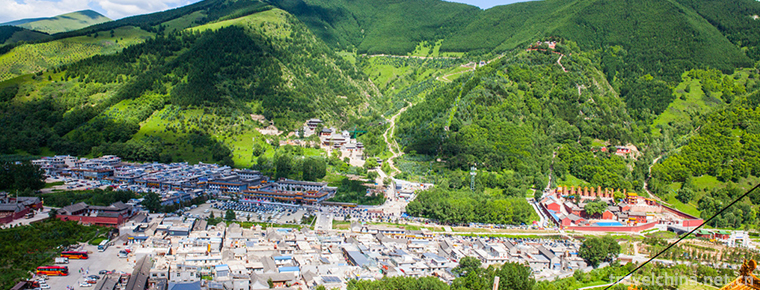
-
Cattle back MountainNiubeishan Mountain
Niubei Mountain is located in the border of Xingjing County and Luding County in Ya'an City.
Views: 171 Time 2018-10-13 -
Go BelieveGoubuli baozi
Goubuli steamed bun is a snack made of flour, pork and other materials. It was founded in 1858 (Xianfeng period of the Qing Dynasty). .
Views: 163 Time 2018-11-14 -
Enshi Grand Canyon
Enshi Grand Canyon is located in Tunpu Township and Banqiao Township, Enshi City, Hubei Province. It is located at the junction of Hunan, Chongqing and Hubei provinces. It is the most beautiful sectio.
Views: 157 Time 2018-12-12 -
Xigaosong Scenic Spot
Xiqiaosong Scenic Area is located at the foot of Tianjing Mountain, 13 kilometers west of Chengxian County, in the middle of Yuqiaoxia, a national AAAA-level tourist attraction.
Views: 187 Time 2019-02-25 -
Quail egg soup
Quail egg soup is a delicacy made of quail eggs, shrimps, etc..
Views: 244 Time 2019-03-24 -
Dabie Mountain Folk Songs
Dabie Mountain folk song is a traditional folk song widely circulated in the west of Anhui Province. With the unique regionality of the interdependence of mountains and rivers.
Views: 247 Time 2019-04-23 -
Fouriers Magic
Fu Tenglong, a national first-class actor and famous magic performer, is a member of the art team in the 1950s. Fu Tenglong was born in a magic family. He is an international magician who integrates p.
Views: 343 Time 2019-05-04 -
Architectural coloured drawing
Building painting is a kind of image art, which occupies an important position and unique function in building decoration. It has vivid image, abundant content, observability and practicability.
Views: 259 Time 2019-05-05 -
Ceramic microbooks
Ceramic micro-calligraphy is one of the folk skills which perfectly combines Chinese calligraphy art with color porcelain art. It has a long history. Artists not only maintain the traditional style, b.
Views: 312 Time 2019-06-18 -
Left Foot Dance of Yi Nationality
The left foot dance of the Yi people, which is called "Gouzha" in the Yi language, falls to the left foot. Dao Guangnian's Dingyuan County Chronicle says, "It's called falling on the le.
Views: 341 Time 2019-07-13 -
Neijiang in yuan Ming and Qing Dynasties
In 1279, China was unified and the Yuan Empire was established. After more than 30 years of war between the end of Song Dynasty and the beginning of Yuan Dynasty, the system of Zizhou and Puzhou has not been restored except Jianzhou. In the 22nd .
Views: 281 Time 2020-12-16 -
Biological resources in Dazhou
There are more than 400 species of vertebrates in Dazhou City, including 60 kinds of mammals, 230 kinds of birds, 14 kinds of reptiles, 10 kinds of amphibians and 85 kinds of fish. There are 52 species of national and provincial key protected wild an.
Views: 363 Time 2020-12-20
